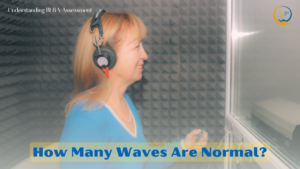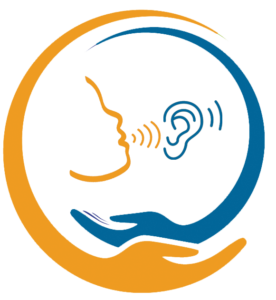In the realm of assessing auditory functions, the Brainstem Evoked Response Audiometry or BERA Assessment serves as a key tool for identifying hearing impairments and neurological conditions that affect the pathways related to hearing. Understanding the intricacies of this assessment, such as the typical number of waves observed, is essential for both medical professionals and individuals undergoing evaluation.
Introduction to BERA Assessment
Before delving into specifics, let’s provide a brief overview of the BERA evaluation. This diagnostic test, also referred to as Auditory Brainstem Response (ABR) test, measures the electrical signals produced by the auditory nerve and brainstem in response to auditory stimuli. By analyzing these signals, healthcare providers can assess the integrity of the auditory pathways and identify any irregularities.

How Many Waves are Typical in a BERA Assessment?
Explanation of BERA Waveforms
During a typical BERA Assessment, healthcare professionals identify five discernible waves denoted as I through V. These waves signify various stages of auditory processing within the brainstem and serve as indicators of the functional status of the auditory pathway.
The five distinctive waves, labeled as waves I-V in the BERA examination, signify specific electrical reactions recorded from the auditory pathway in response to auditory stimuli. Here’s an elucidation of each wave:
Wave I
This wave corresponds to the initial response of the auditory nerve, triggered when auditory stimuli reach the cochlea (inner ear) and stimulate the auditory nerve fibers. Wave I mirrors the synchronized firing of auditory nerve fibers in response to the incoming auditory signal.
Wave II
Subsequent to Wave I, Wave II illustrates further processing of the auditory signal by the auditory nerve as it propagates towards the brainstem. It mirrors the activity of the cochlear nucleus, the primary relay station for auditory information in the brainstem.
Wave III
Wave III mirrors the processing of auditory information at the superior olivary complex, another pivotal auditory nucleus in the brainstem. This wave signifies the amalgamation of inputs from both ears and aids in sound localization and auditory processing tasks.
Wave IV
Wave IV symbolizes the processing of auditory information at the lateral lemniscus level, a pathway responsible for conveying auditory signals from the brainstem to higher auditory centers in the brain. It reflects further refinement and integration of auditory information.
Wave V
Lastly, Wave V represents the arrival of auditory information at the inferior colliculus in the midbrain, a crucial relay center for auditory processing. It mirrors the culmination of the brainstem’s processing of auditory stimuli before onward transmission to higher brain regions accountable for sound perception and comprehension.
Typical Range of Waves in BERA Testing
The Bera Assessment typically reveals all five waves in around 90% of individuals with normal hearing. However, variations in wave morphology and latency may arise due to individual disparities and technical aspects.
Factors Influencing the Waves in BERA Testing
Several factors can impact the number and characteristics of waves observed in BERA testing:
- Age: Infants and young children may display delayed or modified waveforms in their BERA results due to immature auditory pathways.
- Health Conditions: Certain medical conditions, such as neurological disorders or genetic syndromes, can disrupt the transmission of auditory signals, altering BERA wave patterns..
- Medications: Certain medications, particularly those affecting the central nervous system, can influence brainstem electrical activity, thereby affecting BERA test outcomes.
Interpretation of BERA Assessment Results
Abnormal Wave Patterns
Anomalies detected in BERA waveforms, such as missing or delayed waves, may indicate potential auditory issues, encompassing sensorineural hearing impairment, auditory neuropathy, or brainstem abnormalities.
Treatment Considerations
Precise analysis of BERA Assessment outcomes is vital in formulating tailored treatment plans, which could involve the use of hearing aids, cochlear implants, or surgical procedures, contingent upon the specific underlying ailment.
In conclusion, the Brainstem Evoked Response Audiometry (BERA) examination proves indispensable for healthcare providers in evaluating hearing function and identifying auditory pathway irregularities. The assessment entails monitoring five identifiable waves, designated as I through V, each corresponding to distinct auditory processing stages. These waves furnish critical insights into the health of the auditory nerve and brainstem pathways. Comprehending the significance of these waves facilitates the diagnosis of diverse auditory disorders, guides treatment strategies, and enhances overall patient well-being. The BERA examination stands as a cornerstone in audiological assessments, playing a pivotal role in diagnosing and managing hearing-related conditions.
For top-tier BERA testing services, place your trust in Aural Care, distinguished as the premier BERA Assessment clinic in Kolkata. Equipped with cutting-edge facilities and staffed by seasoned audiologists, Aural Care guarantees meticulous evaluations and compassionate patient support.
Aural Care Kolkata

Aural Care is the Best Hearing Aid Clinic in Kolkata offering high quality facilities with lots of experienced doctors. We have 15 years experience in this field. Here, we offer the most comprehensive diagnostic facilities and the latest and best technology in hearing aids.
- Address: GB7, 822, Rajdanga Main Road . Opp. GST Bhawan. Kol 700107
- Phone: +91 98315 37979
- Mail: info@auralcarekolkata.in
Follow us
Facebook: facebook.com/AuralCareCenterKolkata
Instagram: instagram.com/auralcarecenter

